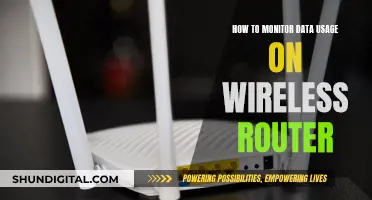
Alcohol ankle monitors, also known as SCRAM (Secure Continuous Remote Alcohol Monitor) bracelets, are lightweight devices that track the wearer's blood alcohol concentration by measuring their perspiration every 30 minutes. These monitors are often court-ordered for DUI offenders and can also be used as a condition of probation or as an alternative to incarceration for multiple-time drunk driving and domestic violence offenders. The SCRAM bracelet is equipped with advanced technology that can distinguish between ingested alcohol and external sources, such as perfumes or lotions, and features anti-tampering measures to ensure compliance. While the bracelet allows for minimal disruption to daily life, wearers must be cautious about using products containing alcohol to avoid false positives.
| Characteristics | Values |
|---|---|
| Name | SCRAM CAM |
| Full Form | Secure Continuous Remote Alcohol Monitor |
| Type | Ankle bracelet |
| Weight | 8 oz |
| Testing | Tests the wearer's perspiration every 30 minutes |
| Technology | Electrochemical fuel cell |
| Alerts | Sends alerts to a database if the offender drinks alcohol |
| Installation Fee | $50 to $100 |
| Daily Monitoring Fee | $10 to $15 |
| Monthly Cost | Up to $300 |
| Waterproof | No |
What You'll Learn

SCRAM CAM® Bracelet
The SCRAM CAM® Bracelet is an alcohol ankle monitor that tests the wearer's perspiration for alcohol every 30 minutes, 24/7. This automated system eliminates testing gaps and encourages accountability, supporting long-term behaviour change.
The bracelet is like a portable breathalyser, allowing the wearer to go about their daily life while ensuring they cannot drink around testing schedules. The SCRAM CAM® system automatically transmits data to a base station, where it is stored and uploaded to online monitoring software. If an alert is generated, trained analysts review the data and notify the supervising authority of any violations. This single-source admissible data can be used in court to support evidentiary hearings.
The SCRAM CAM® Bracelet is widely used in the corrections industry, particularly for DUI offenders who are required to avoid alcohol consumption as a penalty for their arrest. It is also used as a pretrial condition of probation or release from jail. The bracelet helps increase compliance rates with court orders and enhances community safety.
The device is equipped with anti-tamper technology, which identifies any attempts to circumvent or destroy it. It has a hypo-allergenic soft rubber strap that is easy to fit and secure to any ankle.
The SCRAM CAM® Bracelet provides a comprehensive solution for monitoring alcohol consumption, encouraging sobriety, and ensuring compliance with legal requirements.
Setting Up Your ASUS Portable Monitor: A Step-by-Step Guide
You may want to see also

DUI offenders
Ankle monitors, also known as SCRAM bracelets, are often used as an alternative to jail time for DUI offenders. SCRAM stands for Secure Continuous Remote Alcohol Monitor. These devices are strapped to the offender's ankle and monitor their blood alcohol concentration by testing their sweat every 30 minutes. They are usually court-ordered for repeat DUI offenders, but can also be used as a pretrial condition of probation or as a condition of parole.
If an offender attempts to remove a SCRAM bracelet or consumes alcohol, the monitoring company will be notified, and the offender may face further penalties such as jail time, bigger fines, or prolonged probation. SCRAM bracelets are considered scientifically sound by courts, and evidence of alcohol consumption and tampering is generally seen as reliable enough to be admitted into court proceedings.
The cost of a SCRAM bracelet includes an installation fee ranging from $50 to $100 and a daily monitoring fee of around $10 to $15, resulting in monthly costs of up to $450 or more. In some cases, the court may subsidize or cover the cost if the offender cannot afford it.
While wearing a SCRAM bracelet can be uncomfortable and inconvenient, it has several advantages. It allows offenders to avoid jail time, continue working, and seek treatment for alcohol addiction. It also acts as a deterrent to future DUI charges and gives defense lawyers a negotiating tool for plea bargains.
Choosing the Right Cable for Your Monitor Setup
You may want to see also

False readings
Alcohol ankle monitors, also known as SCRAM (Secure Continuous Remote Alcohol Monitor) devices, are typically accurate. However, there are times when these devices give false readings, with false negatives being more common than false positives.
False negatives occur when the device fails to detect actual alcohol consumption. This can be caused by products containing alcohol, such as perfume, lotions, mouthwash, and hand sanitiser. These products contain alcohol that evaporates and can be detected by the monitor, resulting in a false reading.
False positives, while rare, can occur due to equipment malfunction or certain medical conditions that affect metabolism. In one SCRAM study, the False Positive Rate (FPR) was only 0.074% in a 12-hour period.
It is important to note that any attempts to trick or tamper with the device will be futile, as the SCRAM ankle monitors are designed to detect such actions and notify the authorities.
To avoid false readings, wearers of the device must take extra care when performing everyday tasks. For example, they should only use alcohol-free soap and water to clean the area around the bracelet and ensure that the area under the bracelet is thoroughly cleaned and dried after showering.
Monitoring Your Child's Apple Devices: A Parent's Guide
You may want to see also

Cost of a SCRAM bracelet
The SCRAM bracelet, otherwise known as the Secure Continuous Remote Alcohol Monitor, is an alcohol-monitoring ankle bracelet. It is most commonly used in cases where the defendant has been convicted of driving under the influence (DUI). Courts also order SCRAM bracelets in other types of cases involving drug and alcohol use, such as family court, domestic violence, underage drinking, and substance abuse cases.
The SCRAM bracelet is designed to monitor the wearer's perspiration every 30 minutes, sampling the wearer's sweat for alcohol. The device is equipped with anti-tampering technology, which identifies any attempts to remove or destroy it.
The cost of a SCRAM bracelet can vary depending on the provider and the user's financial circumstances. There is typically an installation fee, which can range from $50 to $100, and a daily monitoring fee, which can be around $10 to $15. This brings the monthly cost of wearing a SCRAM bracelet to between $300 and $450. In Cook County, Illinois, the private company providing the SCRAM bracelets, CAM Systems, bills defendants from $12.40 to $24.40 per day for the device, with a sliding scale based on income.
Defendants are usually responsible for paying both the installation and daily monitoring fees, as it is often ordered by the court as part of the penalty for a DUI conviction. The financial burden of these costs can be significant, and there have been concerns raised about the impact on low-income individuals. In some cases, the fees amount to nearly half of the wearer's monthly income.
In addition to the installation and monitoring fees, there may be other charges for damage to the device or service calls. Each violation, including drinking alcohol or tampering with the device, can result in an additional fee, typically around $110.
The cost of the SCRAM bracelet is just one aspect of the overall financial impact of a DUI conviction. Other costs can include fines, legal fees, and increased insurance rates. It is important for individuals to be aware of the potential financial implications of a DUI conviction and to seek legal advice if needed.
Removing the Handle of an Asus ROG Monitor
You may want to see also

How to wear a SCRAM bracelet
SCRAM bracelets, or Secure Continuous Remote Alcohol Monitors, are court-ordered ankle bracelets that monitor an individual's blood alcohol concentration. They are typically worn for 30, 60, or 90 days.
- The SCRAM bracelet is fitted to the ankle by a trained professional. The soft rubber strap ensures a comfortable and secure fit.
- The bracelet automatically samples the wearer's perspiration every 30 minutes, testing for the presence of alcohol. This continuous monitoring means that wearers cannot drink around testing schedules.
- The bracelet is equipped with advanced anti-tamper technology. It has temperature and infrared sensors that detect any attempts at obstruction or removal.
- The SCRAM bracelet wirelessly connects to a Base Station, transmitting data twice a day. If the wearer is out of range, the bracelet will store the data and transmit it once they are back within range.
- The data is then analysed by trained professionals, who review any alerts and notify the supervising authority of any violations.
- Throughout the wearing period, the individual can go about their daily life with minimal disruption. They can shower, work out, and carry out everyday activities while wearing the bracelet.
- At the end of the mandated period, a trained professional will remove the bracelet.
It is important to note that tampering with or attempting to destroy the SCRAM bracelet is a serious offence and can lead to legal repercussions.
Setting Up Remote Vivint Access Without Monitoring
You may want to see also
Frequently asked questions
SCRAM stands for Secure Continuous Remote Alcohol Monitor. It is an ankle bracelet that tests the wearer's blood alcohol concentration through their perspiration every 30 minutes.
The SCRAM ankle monitor tests the wearer's perspiration or sweat every 30 minutes for the presence of alcohol. This is known as transdermal alcohol concentration. It can distinguish between ingested alcohol and alcohol from external sources such as perfumes or lotions.
If you try to remove or tamper with your SCRAM ankle monitor, the monitoring company and the court or probation department will be immediately alerted, which may result in criminal charges and revocation of probation.







